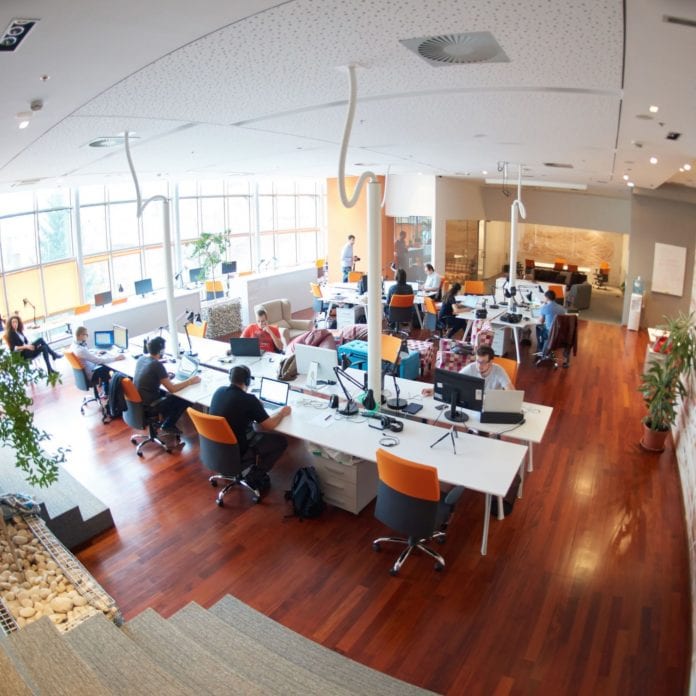In-building wireless solutions help add capacity and support IoT projects
As enterprise connectivity needs continue to evolve, cellular-based access is increasingly complementing Wi-Fi to serve new use cases including the internet of things (IoT). Consider a commercial real estate owner. Tenants, and in turn the owner, benefit from access to in-building wireless to support collaborative, cloud-based services and mobile voice and data usage. But the same in-building cellular systems can also support the booming IoT, which, in this context, can spur an evolution in building management systems to serve use cases like occupancy and temperature monitoring that can reduce energy consumption thereby saving the building owner operational expenses.
The in-building cellular space is currently marked by a shift in capital investment away from operators and toward venue owners. You may have heard in-building cellular described as the fourth utility, right up there with power, water and gas. Because operators have a limited pool of capex earmarked for marquee venues like stadia and transportation hubs and high-value enterprise customers, in many cases, operators aren’t going to supply an in-building system. This leaves the investment up to the venue owner who needs to supply cellular to attract and retain tenants.
In an interview with Senza Fili Principal Monica Paolini, SOLiD Americas President Ken Sandfeld shared his perspective on the dynamic between service providers and building owners. “Operators realize they’re going to have to work with the building owners and with vendors, like SOLiD, to come out with solutions that are affordable for everyone and solve everyone’s problems. Building owners are more proactive about solving for these things. They recognize it’s going to require some investments, and they recognize that those potential investments have ROIs. They’re looking at how that’s going to increase the return on investment on their building, as well as how to make them safer,” he said.
RCR Wireless News caught up with Sandfeld this month at the Verizon Technology User Forum event in Austin, Texas, where he highlighted the role of fiber-deep networks to support ongoing, operator-led densification efforts. SOLiD Americas is a subsidiary of Korean-based SOLiD, which is developing “super hot spots” in Asian markets that can deliver from 10 Gbps to 100 Gbps bandwidth support using millimeter wave frequencies.
“Then,” Sandfeld said “when you walk away from those high capacity hot spots, then you go back to 4G, which has much better coverage. So I see it really playing out that way for in-building, and we’re only a few years away.” Referencing the
n the heavily populated cities of East Asia, network densification became a priority for mobile operators before it became critical for U.S. operators. South Korea’s SOLiD, parent of Texas-based SOLiD Americas, is helping its American subsidiary gain experience with indoor deployments that will build a base for 5G densification. Ken Sandfeld, president of SOLiD Americas, said the company is already developing “super hot spots” in Asian markets.
“Super hot spots can deliver 10, 100 Gbps, really a lot of bandwidth to a hot spot location where you technically can use the millimeter wave bands to be able to deliver that high capacity,” Sandfeld said. “Then when you walk away from those high capacity hot spots, then you go back to 4G, which has much better coverage. So I see it really playing out that way for in-building, and we’re only a few years away. In other parts of the world, when operators deploy their networks, they typically are one fiber and they deliver wireline, wireless and anything in between. In the U.S. it’s never been that way.” But, given increasing investment in fiber by mobile operators, “That’s ultimately going to drive more services into the building. It’s going to allow Verizon to do more in the building with what they offer across the fiber that they may provide to that building.”
This month SOLiD announced the company has incorporated Ranplan Wireless’ network planning solution for use in future projects; Ranplan facilitates the design and optimization of both indoor and outdoor networks, and includes elements that speak to DAS, HetNets, , small cells, Wi-Fi, IoT and, as it becomes commercialized, 5G.
“One of the major reasons we chose to partner with Ranplan Wireless was the advanced capabilities of its technology and willingness to respond quickly to our needs by adding new features and functionalities,” said Lakshmin Thiagarajan, director, Certification and Design at SOLiD. “The hybrid nature of Ranplan Professional also gives us much greater flexibility moving forward as customer project needs shift towards HetNet densification.
Also this month, the company partnered with Cheytec Teleommunications to better address the in-building wireless needs of what’s called the middleprise by Cheytec supplying an RF signal source connected to SOLiD’s DAS.
“Middleprise customers expect great wireless service in-building, but they have been slow to deploy based on the CAPEX and OPEX risk levels and the lack of confidence in operator connectivity. Our partnership with Cheytec reduces the financial risk of middleprise customers and can accelerate installations to provide a complete wireless solution.”

